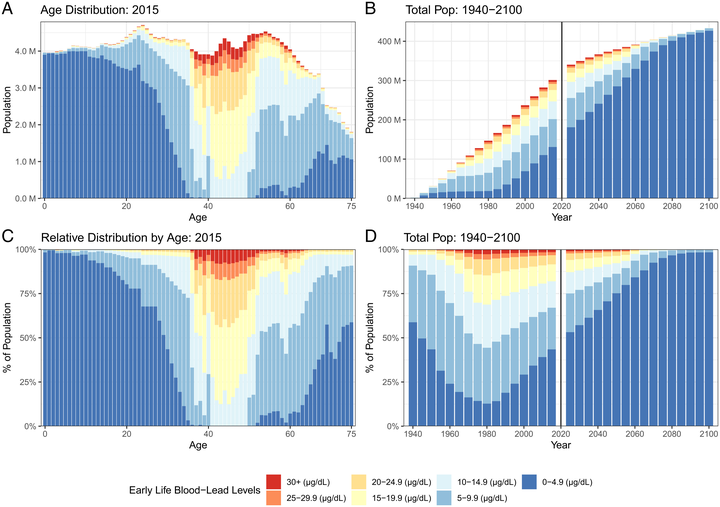Half of US population exposed to adverse lead levels in early childhood

Abstract
Lead is a developmental neurotoxicant in wide industrial use that was once broadly distributed in the environment. The extent of the US population exposed in early life to high levels of lead is unknown, as are the consequences for population IQ. Serial, cross-sectional blood–lead level (BLL) data from National Health and Nutrition Examination Survey (NHANES), a nationally representative sample of US children aged 1 to 5 (n = 11,616) from 1976 to 1980 to 2015 to 2016 was combined with population estimates from the US Census, the Human Mortality Database, and the United Nations. NHANES and leaded gasoline consumption data were used to estimate BLLs from 1940 to 1975. We estimated the number and proportion of people that fall within seven BLL categories (<4.99; 5 to 0.9.99; 10 to 14.9: 15 to 19.9; 20.24.9; 25 to 29.9; and ≥30 µg/dL), by year and birth cohort, and calculated IQ points lost because of lead exposure. In 2015, over 170 million people (>53%) had BLLs above 5 µg/dL in early life (±2.84 million [80% CI]), over 54 million (>17%) above 15 µg/dL, and over 4.5 million (>1%) above 30 µg/dL (±0.28 million [80% CI]). BLLs greater than 5 µg/dL were nearly universal (>90%) among those born 1951 to 1980, while BLLs were considerably lower than 5 µg/dL among those born since 2001. The average lead-linked loss in cognitive ability was 2.6 IQ points per person as of 2015. This amounted to a total loss of 824,097,690 IQ points, disproportionately endured by those born between 1951 and 1980.